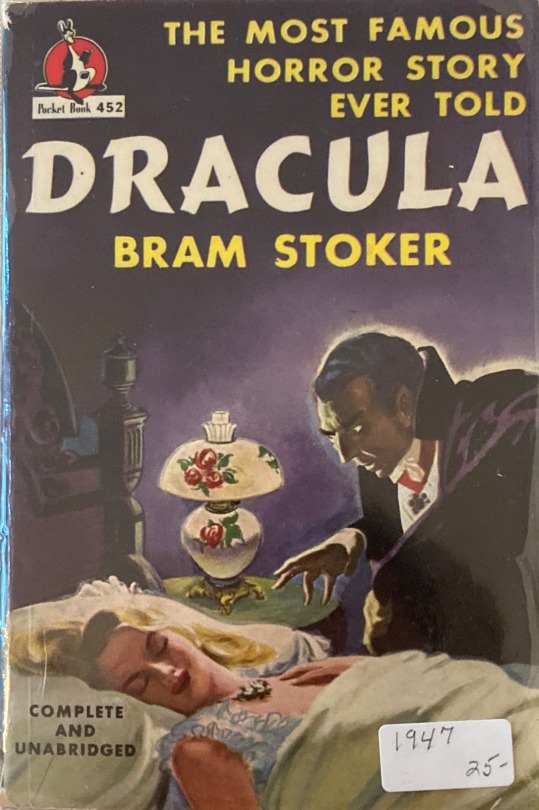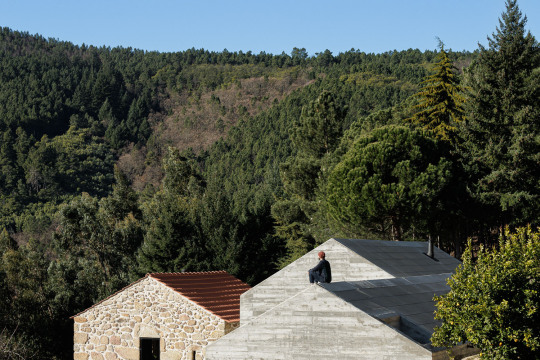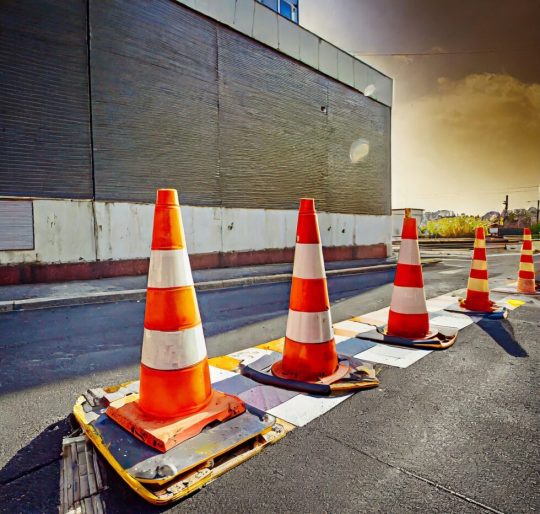#mid twentieth century
Text

Born on this day: British artist Joseph Henry Lynch (28 October 1911 – 16 January 1989), far better known simply as “J H Lynch”. When it comes to kitsch mid-twentieth century art, his only rivals are Vladimir Tretchikoff and of course the Keanes. No home is complete without a framed print of Lynch’s mass-produced idealized portraits of bouffant-haired, false-eyelashed temptresses like Tina, Woodland Goddess, Water Nymph or Autumn Leaves (pictured). If you go to a vintage furniture flea market and there are NO J H Lynch prints on offer, walk out immediately!
#j h lynch#jh lynch#kitsch#lobotomy room#mid twentieth century#retro#bad taste#shock value#mass produced art#bouffant hair#vintage smut#false eyelashes
80 notes
·
View notes
Text

Maxfield Parrish, Cascades (Quiet Solitude), 1959
2K notes
·
View notes
Text

Fellow Dracula Daily nerds PLEASE peep the cover of this old paperback copy of Dracula I found today from 1947. I am simultaneously in love and Deeply amused by it.
#Dracula#dracula daily#dracula bram stoker#this is so classic mid-twentieth century dime novel horror cover#it’s so ridiculous and tropey I adore it#also the back cover explicitly mentions the film adaption starring Bela Lugosi it’s great
247 notes
·
View notes
Text

In a photo from the Shipp Studio Archive, a man and woman sit for their portrait in rural Tennessee.
24 notes
·
View notes
Photo










CASA NAMORA
By David Bilo & Filipe Pina
GONÇALO, PORTUGAL
Situated in a natural shelter of a valley at the foot of the Serra da Estrela, close to the parish of Gonçalo, in a place also known locally by the name of Mora, this agricultural property has approximately 18ha of area, and is surrounded by a dense pine tree forest. (...)
The name NaMora has a double meaning in Portuguese. It refers to the location of the project, where “Na Mora” would translate into “In Mora” (Mora being the place where the property lies), but “namora” in Portuguese means literally “flirt” or “date”. (...)
Inside, we sought the neutrality given by the simplicity and purity of the materials and by the illusion of the absence of detail. The idea of interiority translates into openings towards landscapes, frames, and courtyards strategically located.
Read more Archdaily
#Architecture#Gonçalo#PORTUGAL#Mora#agricultural property#pine tree forest#granite built#mid-twentieth century#morphology of the land#characterized by the existence of several terraces#new volumes of concrete were created and implanted in an existing terrace#farm#namora#CASA NAMORA#David Bilo#Filipe Pina#farm’s activities#neutrality given by the simplicity and purity of the materials#openings towards landscapes#frames and courtyards strategically located.
69 notes
·
View notes
Text

Introduction to Retro Reflective Sheets
Retro Reflective Sheets have emerged as a sport changer in signage and traffic management. These specialized documents play a vital role in ensuring visibility and safety in load handling from road signs and markings to action grid pages What they mean, and their copies are critical to their greater visibility all recognition and impact.

History of Retro Reflective Sheets
The adventure of Retro reflective sheets lines returned to the mid-twentieth century whilst modern minds sought answers to improve nighttime visibility on roads. Initially evolved for military purposes, unfashionable-reflective materials gradually found their manner into civilian applications, mainly in visitors signage. Over the many years, improvements in technology have propelled the evolution of retro reflective sheets, making them imperative components of modern-day infrastructure.
How Retro Reflective Sheets Work
At the coronary heart of retro reflective technology lies the precept of unfashionable reflection, wherein mild is directed returned towards its source. This phenomenon is finished via the strategic association of micro prisms or glass beads at the floor of the sheet. When illuminated by headlights or other mild sources, these microscopic structures jump the light lower back to the observer, making sure most visibility even underneath low-light conditions.
Video Player
00:00
02:00
Applications in Signage
Retro reflective sheets locate massive use in numerous signage packages, which include road signs and symptoms, lane markings, and hazard indicators. Their excessive-visibility houses lead them to essential for directing motorists and pedestrians alike, especially at some stage in midnight or damaging weather conditions. Additionally, retro-reflective sheets are employed in creation web page signage to alert people and motorists to capacity hazards.

Role in Traffic Management
In the area of Traffic Management, Retro reflective sheets serve as priceless tools for reinforcing safety and efficiency. Whether applied to site Traffic cones, barricades, or delineators, those sheets significantly improve the visibility of transient traffic manage gadgets, thereby lowering the threat of accidents and site visitors congestion. By making sure clear demarcation of lanes and hazards, retro reflective sheets make a contribution to smoother traffic go with the flow and less collisions.

Advantages of Retro Reflective Sheets
One of the number one advantages of retro reflective sheets is their fantastic sturdiness and durability. Unlike conventional signage substances, including paint or vinyl, retro-reflective sheets withstand harsh climate conditions and extended publicity to daylight with out fading or deteriorating. Additionally, their lower maintenance requirements translate into savings for municipalities and transportation agencies. From an environmental perspective, the retrospective paper offers sustainability benefits by reducing waste by reducing the need for appropriate replacement.
Challenges and Limitations
Despite their several advantages, retro reflective sheets are not without challenges. Maintenance is a essential aspect, as amassed dirt or debris can impair their reflective homes through the years. Additionally, intense weather situations, which include heavy rain or snow, might also briefly lessen visibility, necessitating proactive cleaning and maintenance efforts. Additionally, ensuring compliance with safety requirements and guidelines creates a situation that requires planning for those involved in signage and site Traffic management.
Future Trends and Innovations
The future of retro reflective era holds promising traits aimed toward similarly improving performance and functionality. Ongoing research seeks to validate best practices and manufacturing processes to improve product sustainability and efficiency. Additionally, blending retro reflective sheet with smart technology, as well as connected cars and IoT systems, opens up new possibilities for enhancing visitor management and security.
Case Studies
Numerous case research exemplify the actual-global impact of retro reflective sheets in enhancing street safety and site visitors management. From busy urban intersections to remote rural highways, those examples highlight the versatility and versatility of pre-assessment signals Whereas reading successful resource management and satisfactory practices, stakeholders can gain valuable insights to optimize their individual signal management and investment in projects.
Regulations and Standards
Adherence to hooked up rules and requirements is paramount inside the deployment of retro reflective sheets. Government organizations and industry stakeholders collaborate to increase pointers ensuring the steady software and performance of retro-reflective signage. Compliance with those standards no longer handiest ensures the protection of avenue customers however also mitigates legal risks and liabilities related to non-compliance.
Environmental Impact
In an era of growing environmental focus, the environmental impact of retro reflective sheets warrants interest. While those materials offer durability and durability, end-of-lifestyles considerations, including recycling and disposal, are vital for minimizing their environmental footprint. Initiatives promoting sustainable practices, which include recycling applications and green substances, play a critical role in mitigating the environmental impact of unfashionable-reflective signage.
Comparative Analysis with Traditional Signage
A comparative analysis among retro reflective sheets and traditional signage substances highlights the superiority of the previous in terms of visibility, durability, and value-effectiveness. While conventional paint or vinyl signage might also provide preliminary price financial savings, the long-time period blessings of retro reflective generation a long way outweigh the upfront funding. Moreover, the enhanced visibility and protection furnished by means of unfashionable-reflective sheets justify their good sized adoption in modern signage programs.
Educational Initiatives
Educating stakeholders and the general public approximately the advantages and right usage of retroreflective sheets is critical for maximizing their effectiveness. Public focus campaigns, education packages, and academic materials help disseminate information approximately the significance of retro reflective signage in enhancing street safety and site Traffic management. By empowering people with information and resources, those tasks foster a lifestyle of safety and duty at the roads.
Market Trends and Growth Prospects
The market for retro reflective sheets is poised for substantial boom within the coming years, driven by increasing investments in infrastructure and transportation tasks international. Emerging economies, mainly, are witnessing fast urbanization and growth of transportation networks, fueling call for for first-rate signage and traffic management answers. Innovations in materials and era are anticipated to similarly stimulate market increase, developing possibilities for producers and suppliers inside the retro reflective industry.
Conclusion
Retro reflective sheets have revolutionized the fields of signage and traffic management, supplying unparalleled visibility and protection benefits. From road signs and symptoms to site visitors cones, those specialized materials play a vital function in guiding and protective street users, in particular at some stage in nighttime or destructive climate situations. As technology continues to advance and infrastructure wishes evolve, retro-reflective sheets will remain integral gear for making sure green and safe transportation structures worldwide.
Unique FAQs
Are retro-reflective sheets only used for road signs?
Retro reflective sheets have diverse applications beyond road signs, including construction site markings, parking lot signage, and temporary traffic control devices.
Do retro-reflective sheets work in all weather conditions?
While retro reflective sheets are designed to enhance visibility under various conditions, extreme weather events like heavy rain or snow may temporarily reduce their effectiveness.
Are there regulations governing the use of retro-reflective sheets?
Yes, government agencies and industry organizations establish regulations and standards to ensure the proper application and performance of retro-reflective signage for road safety.
How long do retro-reflective sheets typically last?
The longevity of retro reflective sheets depends on factors such as quality, exposure to elements, and maintenance practices, but they are designed to withstand years of use without significant degradation.
Can retro-reflective sheets be recycled?
Yes, many retro reflective materials are recyclable, and there are recycling programs available to properly dispose of end-of-life signage materials while minimizing environmental impact.
#Retro Reflective Sheets have emerged as a sport changer in signage and traffic management. These specialized documents play a vital role in#and their copies are critical to their greater visibility all recognition and impact.#Retro Reflective Sheets#History of Retro Reflective Sheets#The adventure of Retro reflective sheets lines returned to the mid-twentieth century whilst modern minds sought answers to improve nighttim#unfashionable-reflective materials gradually found their manner into civilian applications#mainly in visitors signage. Over the many years#improvements in technology have propelled the evolution of retro reflective sheets#making them imperative components of modern-day infrastructure.#How Retro Reflective Sheets Work#At the coronary heart of retro reflective technology lies the precept of unfashionable reflection#wherein mild is directed returned towards its source. This phenomenon is finished via the strategic association of micro prisms or glass be#these microscopic structures jump the light lower back to the observer#making sure most visibility even underneath low-light conditions.#Video Player#00:00#02:00#Applications in Signage#Retro reflective sheets locate massive use in numerous signage packages#which include road signs and symptoms#lane markings#and hazard indicators. Their excessive-visibility houses lead them to essential for directing motorists and pedestrians alike#especially at some stage in midnight or damaging weather conditions. Additionally#retro-reflective sheets are employed in creation web page signage to alert people and motorists to capacity hazards.#Role in Traffic Management#In the area of Traffic Management#Retro reflective sheets serve as priceless tools for reinforcing safety and efficiency. Whether applied to site Traffic cones#barricades#or delineators#those sheets significantly improve the visibility of transient traffic manage gadgets
2 notes
·
View notes
Text
I think the best example of power reveals rather than corrupts is parenthood. You have control over a helpless human who can’t leave you for years. People can be mean to their children in a way they can’t be mean to other other people. A child is someone you can scream at and hit without consequence, without them standing up for themself.
#ever since I was a kid I always thought children should be raised in a#boarding school#orphanage#type environment#probably as a result of my technology averse mother insisting I read mid twentieth century e#English school stories#and of course the best children’s books are about orphans#Harry Potter#a series of unfortunate events#his dark materials#I was envious of orphans#philosophy#children are people#parents#childhood#I don’t want kids because I don’t want to yell at people
17 notes
·
View notes
Text

Happy birthday to @historicalfictionsims! I was scrolling through my dashboard here on tumblr when I stumbled across her Mole-Cool Birthday Contest. I love the historical tie-in, and while the 1950s isn't my usual period, I thought it would be fun to take part.
Meet the Molecular Loveseat. Its modified mesh takes its inspiration from this Davenport and the narrow arms of other mid-century sofas. There are twenty four swatches, sixteen incorporating HFS' Molecular patterns and eight solids in the same color scheme.

The Molecular Loveseat is Base Game compatible.
Created with S4S.
Download from SimFileShare here.
#sims 4#simblr#my cc#historicalfictionsims#hfsmolecoolbirthday#ts4#sims#the sims 4#sims 4 cc#ccsaturday#ts4 custom content#1950s#1950s cc#50s sims#mid-twentieth century#20th century sims
17 notes
·
View notes
Text
i misremembered that thing with dick and babs (i got curious so i checked the issue out again and he GIVES HER A NOTICE OF ENGAGEMENT THE MORNING AFTER LMAO? go fuck yourself dude) and to be fair i dont care abt that issue in the slightest but i gotta admit that dick flirting with infidelity is one of those admittedly ooc things* im really keen on keeping because i think the contrast makes him a more interesting character than if he were steadfast and constant all of the time. it's like an expression of flightiness, if one could be fickle and responsible at the same time. or like, how you have to let a pressure cooker let out some steam or they explode? this feels like an aspect of his baseline being, rooted in genuinely finding beauty and wonderment everywhere, but which you could theoretically follow to uglier ends, as with anything. it's just fun to me i guess
#*for a character that started out mid twentieth century you gotta be selective in how you modernize him#and a lot of the more traditional attitudes i wouldn't necessarily keep. adjust maybe#i also wield fictional infidelity a little like a tool for self harm (to the character not me) so that may explain it some#i also just think it brings a lot of interesting tension with the sort of readers i like to pair him with#birdwatcher mc would balk at the thought#[a constellation with dubious intentions has sponsored 500 coins!]
0 notes
Text
Some Tolkien fans, especially the performatively Christian ones, love to paint a picture of Tolkien as this staid, conservative Oxford don, a stereotypical mid-twentieth-century British academic.
The real JRR Tolkien was a FUCKING WEIRDO. We tend to forget today how completely fucking bizarre his obsessive hobby was to his contemporaries. CS Lewis wrote some fantasy novels. Tolkien CREATED A FUCKING PLANET with history and myths and languages and races and maps and ITS OWN FUCKING BIBLE. And he spent his ENTIRE LIFE working on it, expecting that only a small percentage of it would ever be published or seen by other people.
Tolkien was a FREAK. Don't let so-called fans take that away from him.
#Tolkien was a FREAK#worldbuilding as a trauma response#tolkien#silmarillion#lord of the rings#lotr#lotr rop#lotr trop#fantasy#the hobbit#jrr tolkien
5K notes
·
View notes
Text
“It’s… not what I expected Fairyland to look like.”
“You said you wanted the safest route.”
“Well, yes, but — where are the woods? The forests? The mushrooms with gnomes living in them?”
“Yeah, right — look, all that twinkly enchanted forest crap was made by humans who came here in the 1800s. Capital-R Romantic artists. They hated industrialization and loved nature, and they wanted an escape from the modern world.
“And Fairyland loves humans who want to escape from the modern world. It makes for easy bait. So when artists came here in the 1800s, it made itself look exactly like what they wanted it to.”
“And people want this?”
She gestured out to a world painted in pastel shades of pink and green, and lit with a blaze of neon lights. Every surface gleamed and twinkled with starburst sparkles, and the air smelled sticky sweet with a chemical whiff of hairspray.
Every building was neatly geometrical. Every window was a view into a Norman Rockwell painting. On the wind she could hear the sounds of music and the words: “Sandman, I’m so alone, I’ve got nobody to call all my own…”
It was like being dunked headfirst into a bucket of the 1950s.
But… but there was a weirdness to it. The children playing in Davy Crockett caps and cowboy hats looked like goblins. The gleaming cars with glittering tailfins had huge, sad, colourless eyes instead of headlights.
A gaggle of beehived housewives stood on a corner and watched her pass with glittering, hungry eyes. One of them parted perfectly painted lips and licked its lion’s teeth.
The guide shrugged. “Of course. Every now and then someone falls into Fairyland who loves mid-twentieth century Americana, who wishes they could go back to ‘the good old days.’ Fairyland opens its arms and offers them a world where things are simple, where pixies wear poodle skirts and elves wear aprons, and men are men and women are women and all the jukeboxes in all the soda shops play Mr. Sandman.
“And then this place eats them alive.”
She swallowed. “But it’s safe for us?”
“Do you dream about going back to the fifties?”
“God no.”
“Then it’s safe.”
835 notes
·
View notes
Photo

Harold Charles Francis Harvey, Herding Cows Before a Farmstead, 1935
421 notes
·
View notes
Text
There’s been a distinct shift in how leftist Jew haters are starting to express their Jew hatred and it’s… very back to the old days, to put it lightly. It’s two specific things that I’ve seen. The more moderate stance of ‘it’s so terrible that the bad Jews are playing into Jew hating canards, how dare they!!’ which, just… ugh. And then you have the extremes, the ones who say ‘yeah, I hate Jews, but it’s their fault because of them being the scum of humanity’, it’s the ‘Hitler hated Jews for shit they didn’t do but I hate Jews for shit they did do!’ (a direct quote taken from someone who I can only describe as completely deranged)
And, honestly, seeing this shift has kind of broken me
At this point, there is no denial left. There is no going back. The pretences are starting to be dropped, people are becoming more and more comfortable with their Jew hatred being about Jews, and they’ve realised that it’s acceptable to say that out loud. All they need to do is say it’s our fault, and they get a free pass. We are fully back in the nineteenth century, all we’re missing is the ‘no dogs, no Jews’ signs (oh wait— what’s that about a bar in America banning all (((Zionists)))?) and the pogroms that go with it (oh no, what’s that about Russia, Dagestan, an airport, and a hotel?). We’re back in mid twentieth century Iran, where Jews are stuck between a country not yet legally aggressive to us, and all of the people in said country who want us dead
I don’t think things in the west are at the level of nineteenth century Europe yet, just in the style. But I’m also smart, I’m also connected to my history. My safta left Iran in 1951, at the age of ten, because her family saw what was happening. Ninety thousand other Jews in Iran saw it too. They caught on and they left. And then two decades later the revolution happened, and now our family can’t even visit without being executed. Many Jews have convinced themselves that we’ve assimilated, that were just like everyone else, that were safe. But we’re not safe. We are a people who have been persecuted and expelled and massacred for over two thousand years, it’s not going to suddenly stop now. And now that the people who are supposed to be fighting to keep us safe have started killing us, we have nobody but each other
I don’t think everyone should pack up and leave their countries right now. But I do think you should have a suitcase ready
#I feel like something has fundamentally broken in me#and seeing the progression of the emotional states of the other Jews on this site over the past few months shows me I’m not unique for that#Jewish stuff#antisemitism#leftist antisemitism#jew hatred#jumblr#I feel kind of bad tagging jumblr because it’s supposed to be a happy place#but I just need a community right now
706 notes
·
View notes
Note
spencer reid holding hands 4 the first time : ( 've been rewatching cm and i miss my boy sm : (( you're most recent peter fic is so sweet btw im absolutely obssessed!!!!! love you bunches
Thank you sweetheart <3
Spencer Reid x fem!reader ♡ 665 words
You and Spencer have had a very…tentative beginning to your relationship. Normally, when you think of a first date, you’re worried about how much the other person expects. (Will they want to kiss you? Will they want more? What if you don’t want to? How do you say no without making it awkward?) With Spencer, there’s been none of that. You’re on date three, and he’s kept completely to himself the entire time. When you met up earlier in the week he’d let a hand hover near your elbow when you nearly tripped over a curb, but you’d barely felt the whisper of his skin against yours before he was putting it back in his pocket, the danger having passed.
You’ve always thought that you’d prefer to take things slow, and Spencer seems that way too, but now you’re itching for something more. Just something tangible to show that you like him, that he likes you too, that you’re not just going on these dates for no reason at all.
So, bold thing that you are, you let your hand hang in the empty space between you as you walk. An offering.
The first time Spencer’s knuckles brush across yours, knobby and skimming, he almost stops talking. He’s been saying something about Alexander Pope and Eliza Haywood (and you’re doing your best to follow along, honest), but he falters mid-sentence, his hand stuttering in its movement.
“And, uh, actually,” Spencer goes on, getting his verbal feet back under him, “it was only in the late twentieth century that her works started surfacing in academia…”
You nod along but don’t move your hand, letting Spencer’s graze past it again. This time, you lean into the touch, pushing your knuckles into his almost imperceptibly. And this time, Spencer’s hand doesn’t continue along its trajectory. He lets it rest alongside yours, your skin brushing up against each other’s with the movement of your walking. After a few seconds, his pinkie teases yours.
You bite back a smile, crooking your pinkie so it hooks around his. Spencer moves his hand, and for a second your heart drops, but he’s only bringing it to the inside of yours, interlacing your fingers loosely.
“Is this okay with you?” he asks, careful and to-the-point.
“Yeah.” You look up at him sheepishly, wriggling your fingers in his to get them closer. “I’ve been wanting to do this.”
“Me too,” Spencer says quietly. Your heart balloons until you’re sure it’s about to float off and take you with it.
His palm is rougher than you’d expected. Spencer comes off as such an academic, sometimes you can forget that he’s in the literal FBI. He handles guns and had to go through training, and you can feel it in the light scratch of his calluses against your palm. Slender fingers stretch over your knuckles, deft and capable. His touch sends a pleasant tingling all the way up from your hand into your buzzing brain.
“Sorry,” you say softly.
Spencer looks confused. His thumb runs the length of yours, a thoughtless movement or a soothing touch, it doesn’t matter. If he does it again, you’ll puddle down onto the pavement for sure.
“What are you sorry for?” he asks.
“I sort of interrupted you.”
A little smile teases the dimple in his cheek. “I don’t mind.”
You give his hand a gentle tug, feeling brazen. It cracks something open in him, and his smile comes out for real, the familiarity between you suddenly so natural.
“Tell me about Eliza Haywood,” you urge. “Did Pope just hate her because she was a woman?”
“That was definitely a big part of it,” Spencer allows, and his voice seems to go back into the conversation while his face stays somewhere else. He’s still wearing that smile, eyes squinted just slightly like he’s having some trouble figuring you out and it might be his new favorite game. “But also it had a lot to do with the perception of novels…”
#spencer reid#dr spencer reid#spencer reid x reader#spencer reid x fem!reader#spencer reid x y/n#spencer reid x you#spencer reid x self insert#spencer reid fanfiction#spencer reid fanfic#spencer reid fic#spencer reid fluff#spencer reid imagine#spencer reid scenario#spencer reid drabble#spencer reid blurb#spencer reid oneshot#spencer reid one shot#criminal minds#criminal minds x reader#criminal minds fanfiction#criminal minds fanfic#criminal minds fic#criminal minds fandom
766 notes
·
View notes
Text
I am posting and responding to this ask anonymously as I don't want anyone harassing its sender. This has already been communicated with the person who sent the ask.
I just want to thank you for being a light in the darkness of anti-semitism, especially on this website. I have found I am on this site a lot less ever since it was made clear that other leftists here are more anti-semitic than we ever knew possible, using very specific wording of our own trauma against us (i.e. saying stuff like "colonialism", "genocide/ethnic cleansing", and calling JEWISH PEOPLE Nazis).
It feels like, at best, they know Hamas ≠ All or even most Palestinians, but think that they think all JEWS = Bibi; and at worst, agree with Hamas and think of him as some sort of "freedom fighter".
So, thank you from one leftist Jew to another, just trying to keep afloat here. ❤️
You are very welcome; it's certainly been overwhelming, and I'm glad this can be a safe space for you.
I do want to push back on some of this ask, though. Specifically in regard to terms such as "colonialism," "apartheid," "genocide," and "ethnic cleansing."
The use of these terms is not inherently anti-Semitic. For a lot of people, these terms are the best ones they have access to describe what they are seeing. I do think such terms as “colonialism” and “apartheid” are overly simple in regard to the last ~3000 years of Jewish history, and that they cast the situation into an alien historical context which dilutes and uncomplicates the all the historical realities at stake, but I truly do not think that all who use these terms do so to cause Jewish people pain.
Further complicating the picture is that terms like "colonialism" aren’t completely wrong. Modern Zionism arose in the context of mid-nineteenth century European large-scale movements towards nationalism (ie, the creation of nation-states) and away from the multi-national empire. Jews—a subject of anti-Semitism and fifth columnist suspicions within those emergent European nations—reacted to all this by joining the nationalism game.
What’s ironic, is that those European Jews who founded contemporary Zionism were reacting to the exclusion and racial hatred with which Gentile Europeans treated them, and then once they had some settlements in Palestine, they deployed similar variants of racial hatred at both the Palestinian Arab population, and Middle Eastern Jewry.
The existence of a distinct people and ethnic group in Palestine before the aliyot were not something the first generation of Zionists were concerned with. Because they were part of the same shitty, white supremacist, pro-imperialistic intellectual European tradition to which they were responding as victimized parties. As time went on and Zionist thought spread across Ashkenazic communities, we can see some variants. Some forms of far-left Zionism in twentieth century Poland, for example, actively built the presence and rights of Palestinian Arabs into their ideology, some of them actively stating that Zionism could not be a success if it necessitated transforming Palestinian Arabs into a group of secondhand citizens and a cheap source of labor in their own home.
Those leftist strands of Zionism tended to be Socialist/Communist in nature, and centered around the idea of life in Eretz Yisrael as one of a series of self-sufficient communes. Thus when the 1930s hit and things start to go bad, the Zionists we see fleeing to Palestine tended to be of the more centrist and far right variants. The left wing, socialist movements, already operating as a collective, had a membership uncomfortable with fleeing to safety while the rest remained behind.
And that same socialist/communal attitude, is why those variants of Zionist thought never made it into the Israeli political mainstream; most of their members and proponents were murdered in the Holocaust in part because they refused to leave their comrades behind. The General Zionists and Zionist Revisionists who rode out the years of the Holocaust in Palestine therefore already had access to the avenues of power which would become important in 1948, when the British Empire shrugged off its responsibilities towards the regions it colonized and destabilized.
Now, as for ethnic cleansing. I can’t sugar-coat this: that’s what the Naqba was. It was ethnic cleansing of Palestinian Arabs from their homes to make way for the Jewish State. The manipulative shit (but still somehow extremely prestigious) youth group I was in taught us that Arabs call it Naqba because they hate Jews and therefore existence of Jews in the Southern Levant was a tragedy, as was the fact that Hitler didn't finish the job.
That’s garbage: it’s called the Naqba because it was ethnic cleansing. And that's not the fault of the Holocaust survivors who made their way to Mandatory Palestine/Israel in the late 1940s--they lacked political power, and were often looked down upon by those who did; the Holocaust as part of Israeli National Mythology wasn't an immediate Thing.
If you spent your formative years around older Jewish folks of A Certain Generation, whose trauma has pretty much placed a permanent block on their ability to see some of what went down in 1948 for what it was, I can’t blame you for having that gut/cognitive dissonance reaction to the use of “ethnic cleansing” in the context of Israel and Palestine. I know those older folks. I loved them. They’re mostly gone now, and I miss them terribly. But their trauma-induced view of everything lives on in the ability of some younger Jews to properly name and understand what it is that happened in 1948.
It was ethnic cleansing.
Further, not only were Palestinian Arabs ethnically cleansed, but the Middle Eastern and North African (MENA) Jews who were forced by their governments to flee their homes of thousands of years and seek refuge in Israel throughout the second half of the twentieth century…the Western and Central European Jews in control of Israel and its institutions treated them like shit too. Hadassah actively stole the babies of Yemeni Jews, told the parents that their children were dead, and rehomed them to Ashkenazic couples. There were death certificates. Members of the Ethiopian Jewish community were forcibly sterilized, and their ongoing treatment by the State is racist and generally atrocious. And this analysis of the relationship between the Israel State, MENA Jewish populations, and different Ashkenazic groups in Israel is horribly short and overly simple.
As for genocide. I honestly don’t know. I do know many people, who are very much not Anti-Semites, who are calling what’s happening in Gaza right now genocide; many of these people are also Jewish. I know many others who refer to the experiences of Palestinians between 1948 and now as a slow genocide. Many of these people are also actively not anti-Semites, and many of them are Jewish.
So these terms, as uncomfortable as they may feel for people within the very specific Jewish generational background I believe we share, are not deployed as anti-Semitic weapons. Nazi comparisons? Yes. Swastikas superimposed over the Star of David? Yes. Very specific hook-nosed Jewish caricatures in relation to Israelis? Yes. Blood libel shit? Yes. These are all anti-Semitic, and are deployed to hurt and retraumatize Jewish people. But the rest are not nearly that simple.
And I didn’t learn this from like, Bad Evil Post-Modern Academics at Columbia University Who Hate Jews; I learned this from doing graduate-level work in the field of Modern Jewish History, and working in Jewish archives; this did not come from outside the building.
Now, as for Hamas as freedom fighters…that’s ignorant at best. Hamas’ charter clearly calls for the global destruction of the Jewish people [ETA: they edited this part out in 2017 for PR purposes], and their actions as rulers are horrifically, violently, homophobic, and seem to be more abut provoking Israel than they are about governing and protecting their people. But as you said, Hamas isn’t all Palestinians, and it’s also not all Palestinians who consider themselves freedom fighters. (A second reader of mine had the following commentary on this paragraph: "Might need a bit more complication around Hamas? I know that's not your area of expertise but it's worth mentioning that they were basically set up to undermine the PLO and what would become the Palestinian Authority in the West Bank. You're right that they aren't representative of all Palestinian thought and resistance, and that they are on some fuck shit.")
So while I’m so glad that blog is a comfort to you, I encourage you to also take a step into some of your discomfort, and ask yourself where it comes from.
No one reading this post has my consent to use it to silence other Jewish people who are in different stages of their journey towards understanding how generational trauma has impacted their ability to grasp all of this. Further, if you choose to attack me for gently calling my people in, you're a piece of shit and I will be mean to you.
901 notes
·
View notes
Text
Years back I remember watching a children's show called Huntik (apparently done by the same people as Winx Club? Small world.) One of those collect-em-all Pokelikes, you know the drill. There is exactly one plot beat from the show that I've retained, which is the late-game reveal that The Organization, the supposedly ancient world-controlling power-hungry cult that the plucky heroes have been fighting for the whole show, was actually only created in the mid-twentieth century, about 50 years before the start of the show, but the founders deliberately manufactured a false thousand-year paper trail to pump up their mystique. Which is hilarious. More shows involving the supernatural should lean into "all this bullshit is much newer than you originally thought" as the other side of the all-too-common "this bullshit has been going on much longer than you originally thought"
193 notes
·
View notes